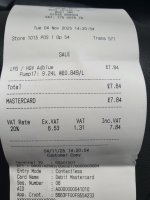nabsim
Full Member
- Messages
- 4,172
That does not apply to a private van bottle or tankIn the UK, the testing of LPG cylinders is primarily governed by The Carriage of Dangerous Goods and Use of Transportable Pressure Equipment Regulations, which implements the international ADR (Agreement concerning the International Transport of Dangerous Goods by Road).
Key Legal Requirements
- Mandatory Periodic Inspection: All refillable LPG cylinders used for transport of gas by road in the UK must be periodically inspected and tested to ensure they are safe and fit for purpose.
- Maximum Interval: The standard maximum interval between these inspections is 10 years.
- Extended Interval: The interval can be extended to 15 years if the cylinder owner applies to and receives authorisation from the national competent authority, which in the UK is the Vehicle Certification Agency (VCA). This requires meeting specific conditions and an enhanced internal inspection procedure. Cylinders with this authorization are marked "P15Y".
- Competent Persons/Bodies: Periodic inspection and testing must be carried out by an approved Inspection Body.
- Cylinder Marking: Following a successful inspection, the date of the inspection and the identification number of the inspection body must be permanently marked on the cylinder.
- Pre-fill Checks: Cylinders must also undergo documented checks before, during, and after every fill in accordance with relevant standards (e.g., BS EN 1439).
- Landlord/Commercial Use: For LPG appliances provided by landlords in tenanted properties or for commercial use, there is a legal requirement under the Gas Safety (Installation and Use) Regulations 1998 for an annual safety check by a Gas Safe registered engineer.
Responsible Parties
- Cylinder Owners: The owner of the cylinders (often the LPG supplier) is responsible for ensuring the cylinders are manufactured to appropriate standards and undergo the required periodic inspections.
- Users: Users of LPG systems have a duty to ensure that the whole system is in a safe condition at all times and that regular maintenance is conducted.
- Inspection Bodies: Approved inspection bodies are responsible for conducting the official periodic testing and marking the cylinders.

